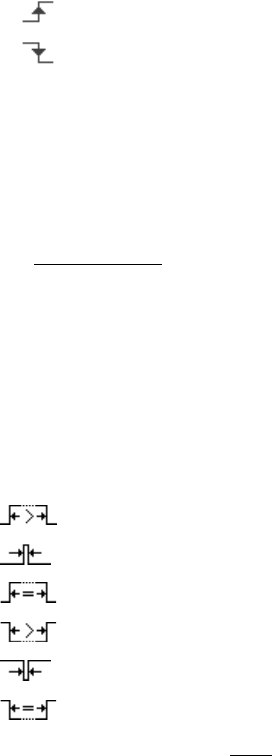Technical data
Table Of Contents
- Agilent 3000 Series Oscilloscopes-At a Glance
- In This Book
- Contents
- Figures
- Tables
- Getting Started
- Step 1. Inspect the package contents
- Step 2. Turn on the oscilloscope
- Step 3. Load the default oscilloscope setup
- Step 4. Input a waveform
- Step 5. Become familiar with the Front Panel Controls
- Step 6. Become familiar with the oscilloscope display
- Step 7. Use Auto-Scale
- Step 8. Compensate probes
- Step 9. Use the Run Control buttons
- Displaying Data
- Capturing Data
- Making Measurements
- Saving, Recalling, and Printing Data
- Oscilloscope Utility Settings
- Specifications and Characteristics
- Service
- Safety Notices
- Index

Capturing Data 3
Agilent 3000 Series Oscilloscopes User’s Guide 79
4 Press Slope to select the edge to trigger on:
• — Rising edge.
• — Falling edge.
To set up pulse width triggers
A pulse width trigger occurs when a pulse is found in a waveform that
matches the pulse definition.
1 Press Mode/Coupling
.
2 In the Trigger menu, press Mode until “Pulse” is selected.
3 Press Source to select the waveform to trigger on:
• CH1
• CH2
• EXT — the external trigger input.
• EXT/5 — the (5:1) attenuated external trigger input.
4 Press When to select the type of pulse to trigger on:
• — Positive pulse greater than the width setting.
• — Positive pulse less than the width setting.
• — Positive pulse equal to the width setting.
• — Negative pulse greater than the width setting.
• — Negative pulse less than the width setting.
• — Negative pulse equal to the width setting.
5 Press Setting and turn the Entry
knob to adjust the width setting.
The width setting can be adjusted from 20 ns to 10 s.










